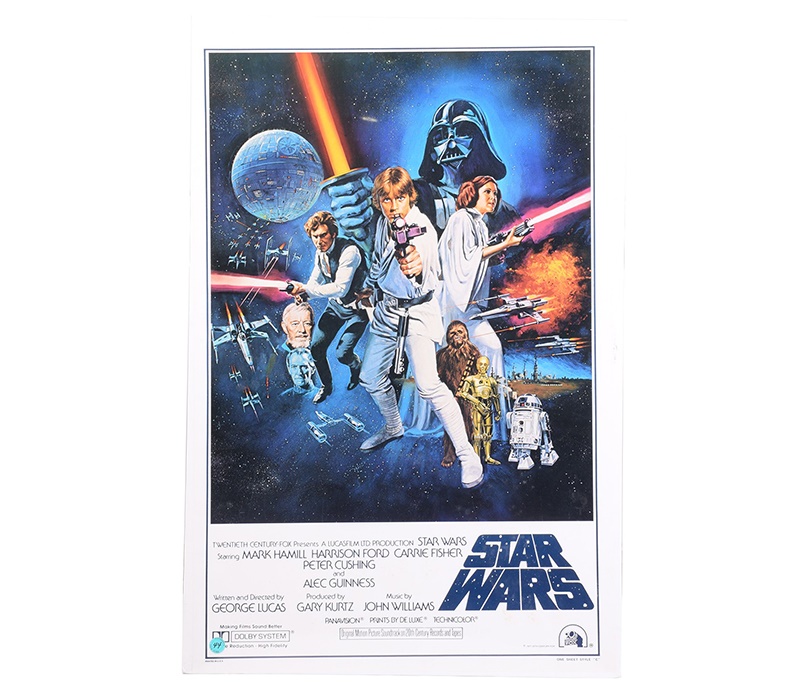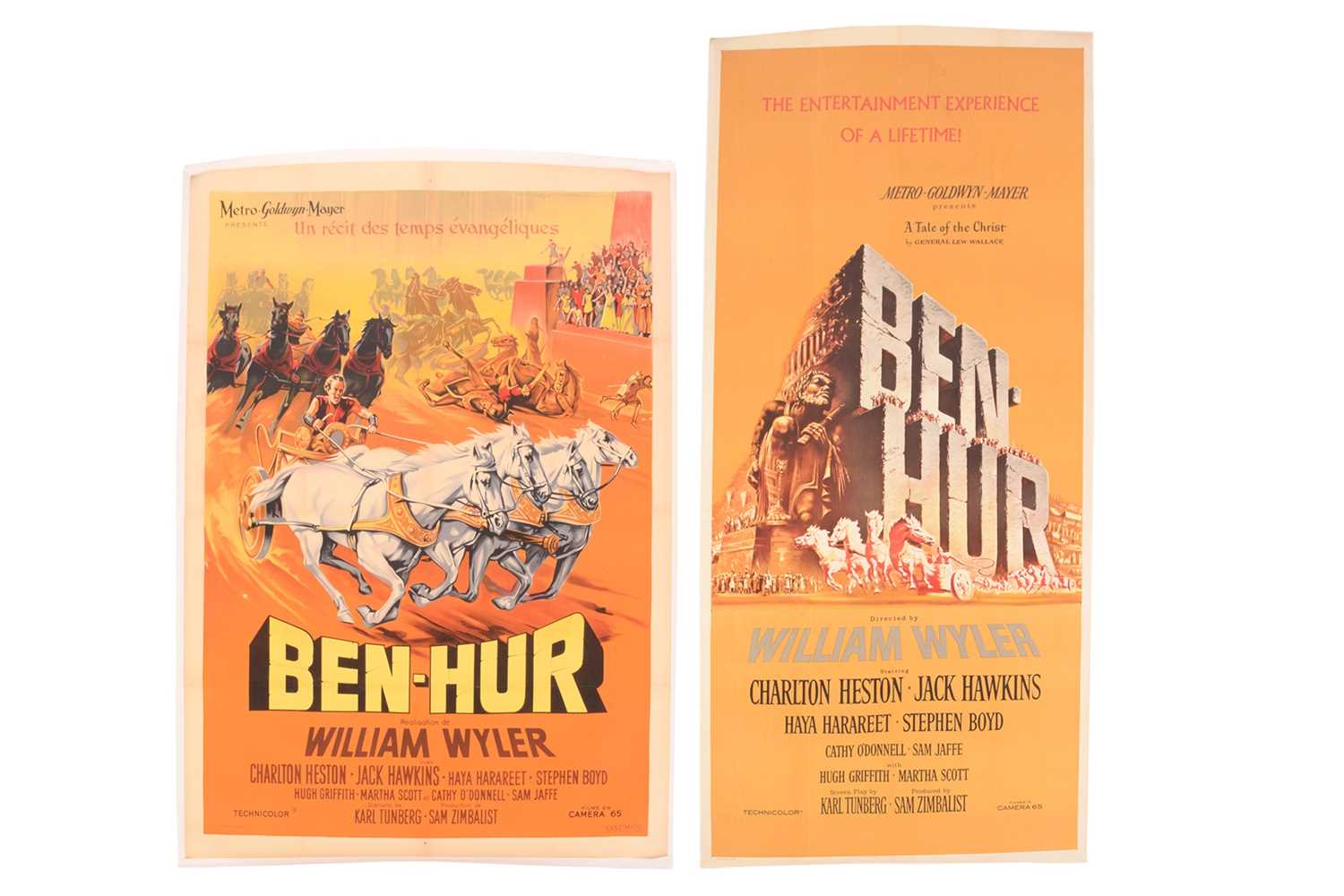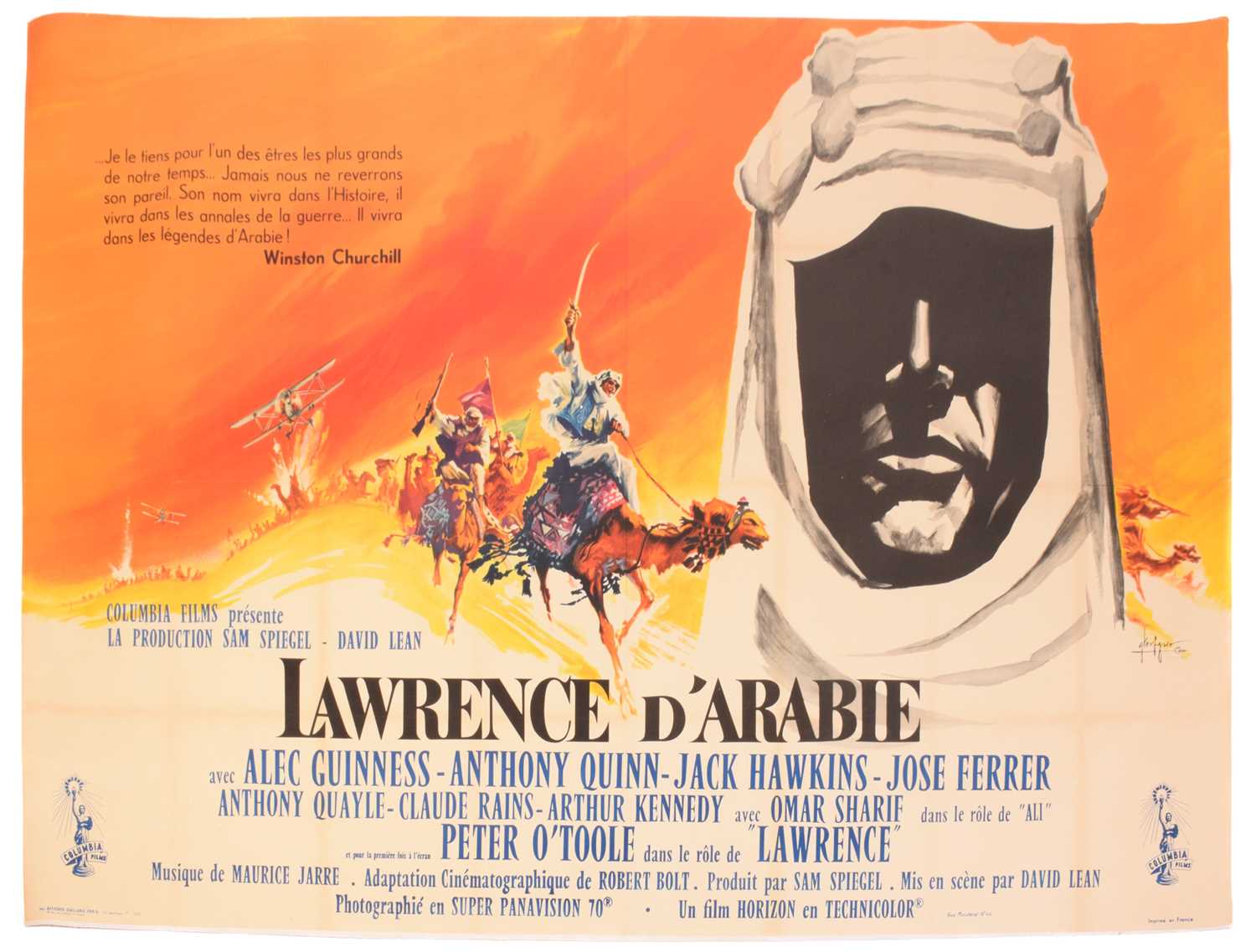How Do I Know if my Film Poster is Valuable?
Posters exploded in popularity in the early 20th Century
28/02/2024
The poster is a crucial piece of 20th Century media. A tool that not only gives information but also looks striking and often beautiful… Posters exploded in popularity in the early 20th Century, making it possible to advertise everything from food products, travel, social activism, sporting events and of course movies (and more recently, TV shows).
The poster as we know it now was pioneered in the 1870s, when French painter Jules Cheret and brothers Léon and Alfred Choubrac found a way to drastically reduce the cost of using a lithographic press. This method was used for the next 80 years or so, before techniques advanced to allow for photographic and later digital printing. Posters have been used for advertising films since 1985’s L'Arroseur Arrosé, with most major films today having a poster released to help market it. Posters for movies are also among the most actively-collected, representing a simple way to show off your love of both cinema and art.
 Star Wars (1977), a US One Sheet film poster
Star Wars (1977), a US One Sheet film poster
What determines the value of a poster?
Rarity
- Chances are, the rarer the poster is, the more value it holds. However, the value of any item is only based on what someone will pay for it, so the more popular the subject matter (movie, film star, TV show, etc), the higher the chance of higher value. Conversely, if the market for a poster is very small, the value might actually be lower.
Age
- Movie posters from 1900-1950s tend to be among the most sought-after, partially due to the rarity of the items, but also due to the quality. With old printing techniques such as the lithographic press being more labour-intensive, the quality is often significantly better than posters released now.
- Historical significance can also play a role in a poster’s value, with iconic movies such as Star Wars and Back to the Future being able to claim a very high value due to the influence that the franchises have now.
Aesthetic quality
- As a poster is designed to be displayed, whether or not it actually looks nice or not can contribute to a poster’s value.
- Look out for characteristic design from different periods in time too. Posters have ranged in style, including Art Nouveau, Cubism, Art Deco and Bauhaus, and as each of those design styles comes in and out of value as fashion and design evolves over time, so too the value of a movie poster can fluctuate. These design characteristics can also go some way to helping identify when a poster was designed and released.
Physical condition
- As with any collectible, the physical condition of a poster is crucial to value – even the rarest of posters will have a severely depleted value if it is torn to shreds.
- It can be useful to check how a poster has been stored – if it has been ‘dry mounted’ as many posters were in the 80s, it could be irreversibly damaged and lose up to 50% of its value. Also check that the poster has not suffered UV damage from being exposed to sunlight.
Size
- Generally, the bigger a poster, the more valuable it will be (providing it is authentic – more on this in a moment).
Re-releases
- Working out if it is a re-release or not can also go some way to establishing value. If it is, it will still hold value, but it is often less than an original release poster.
An original colour 1962 film poster for 'Lawrence d'Arabie (Lawrence of Arabia)
Do your research
Checking what others have sold for online is a good place to start with valuing a poster. However, it is important that these posters are comparable to your own – is it from the same movie? Is it the same condition? The same size? If any or all of these qualities are different, then there is little point in comparing the sale prices of these posters to your own. Often, comparing sale prices can be quite tedious, especially if your poster is rare – it could also be possible that there are no examples of your poster being sold online at all, so don’t be disheartened if your research doesn’t yield any useful information.
Sadly, unlike other industries, such as the car industry, there is no definitive guide to how much a movie poster should be worth. Whilst some guides do exist, searching through these can be a very tedious process, with guides often only being available in specialist museum or university libraries, and it is not uncommon to trawl through several volumes without finding anything useful at all. For this reason, getting a free estimate/appraisal can often be the best method to work out the value of your poster.
 A pair of original colour film posters from 1952 and 1959 for 'Ben-Hur'
A pair of original colour film posters from 1952 and 1959 for 'Ben-Hur'
Checking a poster’s authenticity
With movies having the history and cultural significance that they do, it was inevitable that the posters that capture nostalgia in a beautiful image would be hijacked at some point, and sadly, the market is now flooded with illegal bootlegs of classic posters. Think about the iconic poster from Pulp Fiction that seems to adorn the wall of any teenage rebel in a film/TV show from 1997-onwards – not all of them can be originals! It goes without saying that it is crucial to establishing a poster’s value that it is not a bootleg, but how can you tell what is real and what is fake?
First of all, you need to know when the poster was released. Posters released from 1900-1950s are the easiest to authenticate. Print quality should be extremely good, with colours retaining vibrancy and the lack of pixels in the images – even under a magnifying glass. Texture will also be different to modern posters – the pulp means that it will have a rougher, more textured feel, similar to newspaper.
1940-1990 is the next easiest period to authenticate. The National Screen Service (NSS) distributed most movie posters, and dated all posters with the year of release and a four-digit code assigned to the film, which is all printed at the bottom of the poster.
After 1990 it becomes trickier to identify posters, with bootleg posters becoming more and more prominent. With the glossy feel of prints now being easier to reproduce too, buyers should always proceed with extreme caution when looking at posters from this era – especially when looking at posters from 2000 onwards, as the NSS ceased to exist in 2000 in the US, and 2007 in the UK.
However, it still possible to authenticate these posters with a little more work. Measuring the dimensions of a poster and comparing them to other, confirmed authentic posters is a good place to start. Data on this is available in archives, museum collections and specialist auction houses. If you can track the provenance of a poster, that also bodes well. But with all collectibles, if a deal seems too good to be true, chances are it probably is.
What is the best place to buy and sell posters?
Like with many collectibles, it can be very hard to know exactly what a good price is to pay for a poster, or to achieve when you sell yours. Therefore, getting the help of experts can only be a good thing, helping you to get the best price for your item, or ensuring that you are only buying authentic pieces.
With extensive industry experience, Dawsons’ team of experts provide a seamless service covering valuation, logistics, marketing, and sale. Our sole focus is to achieve the maximum possible sale results for our clients, through expert evaluation and multi-channel marketing.
read more
Where to Sell Film Memorabilia
How Do You Authenticate Movie Memorabilia?
Are you considering selling a Movie or TV poster?
Our expert team of Valuers would be delighted to provide confidential sales advice.
With a huge global audience, Dawsons can achieve the best price for you at auction.
